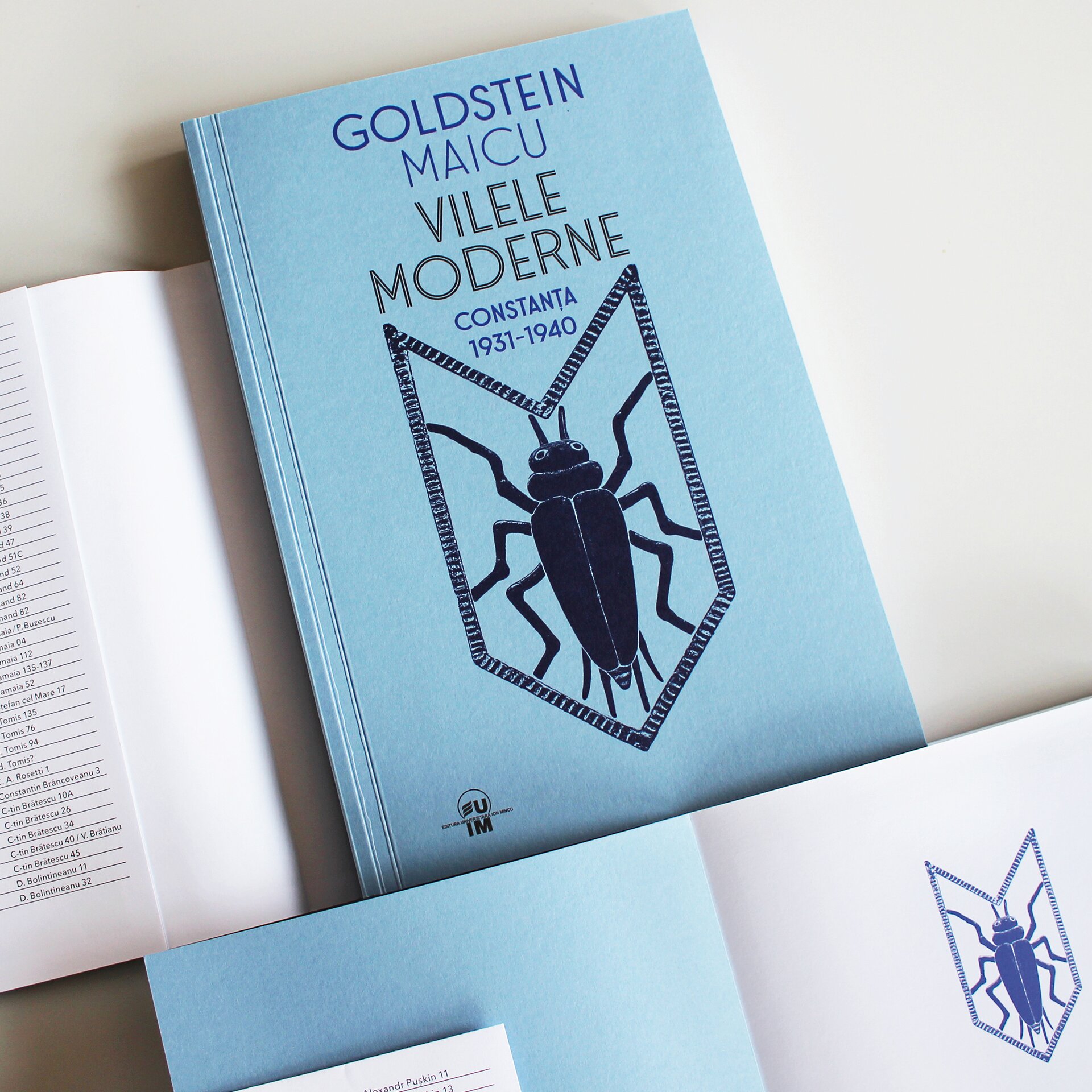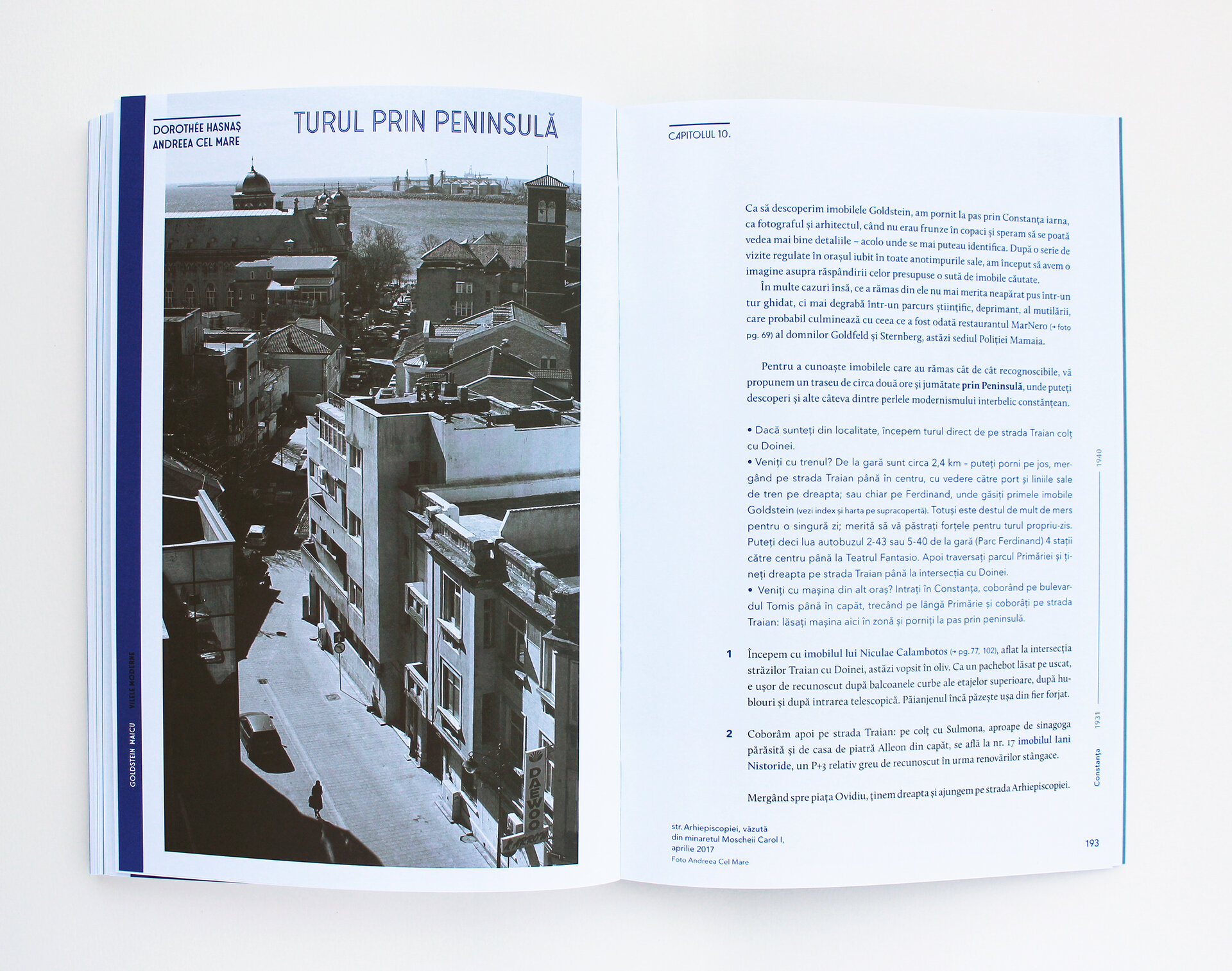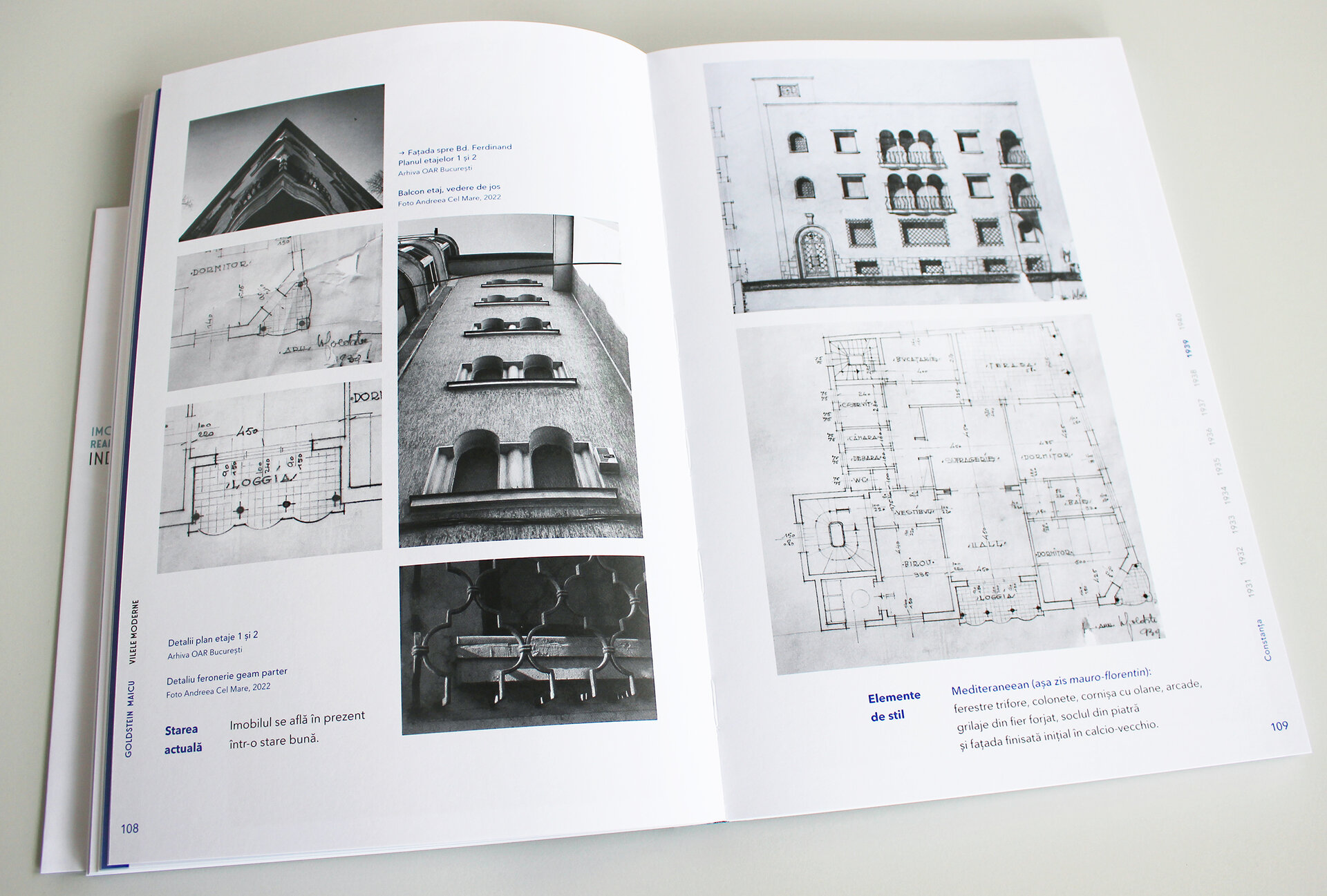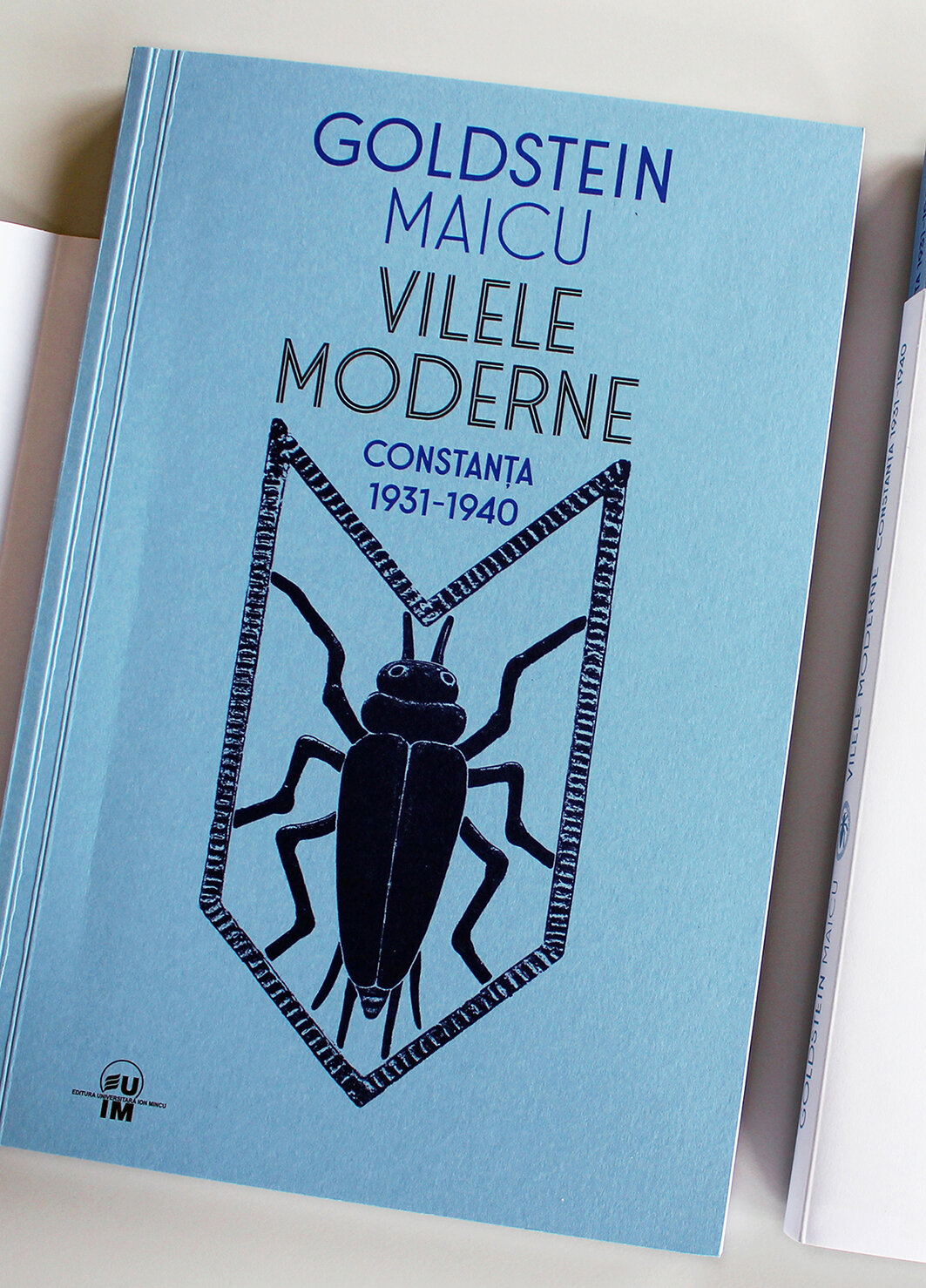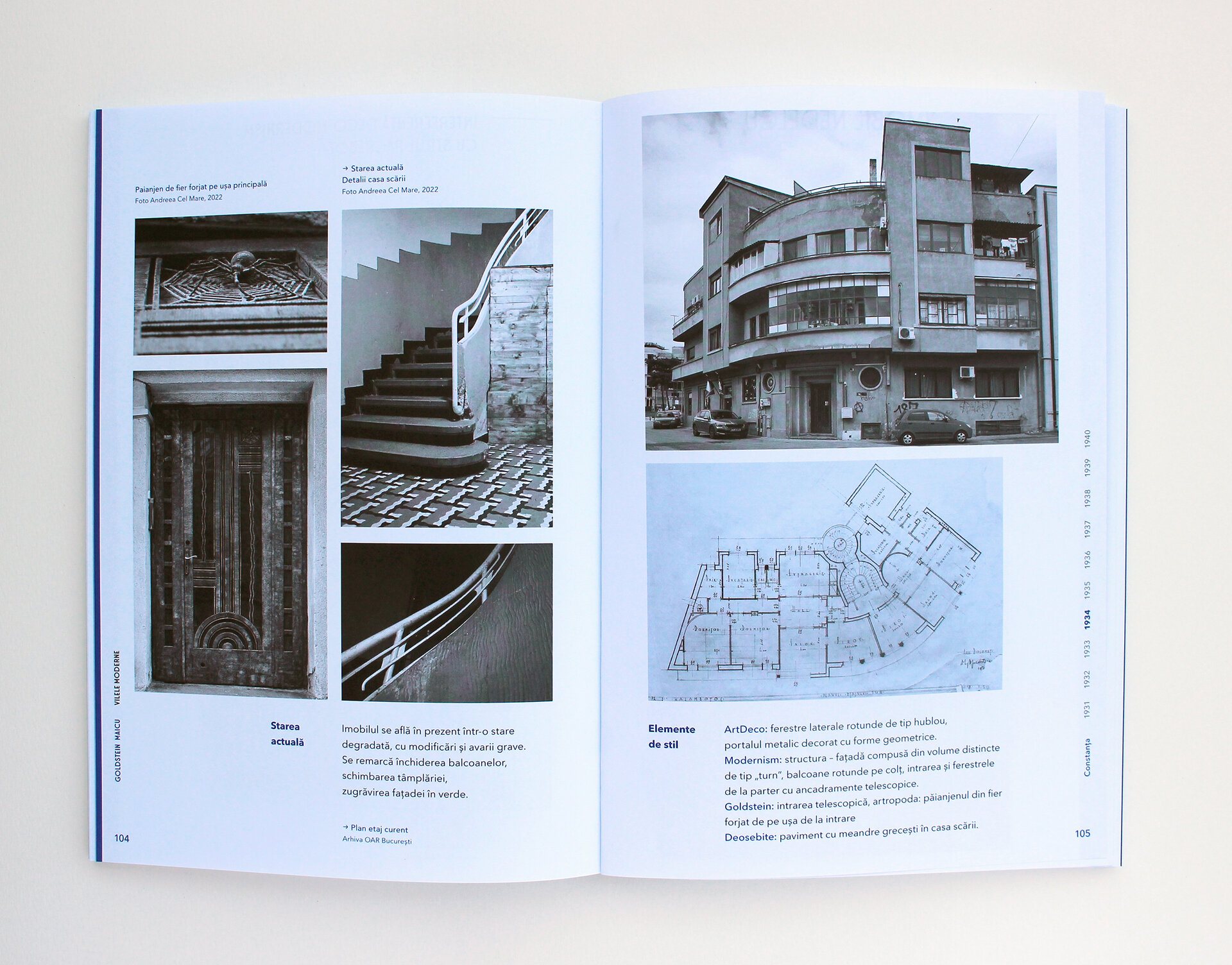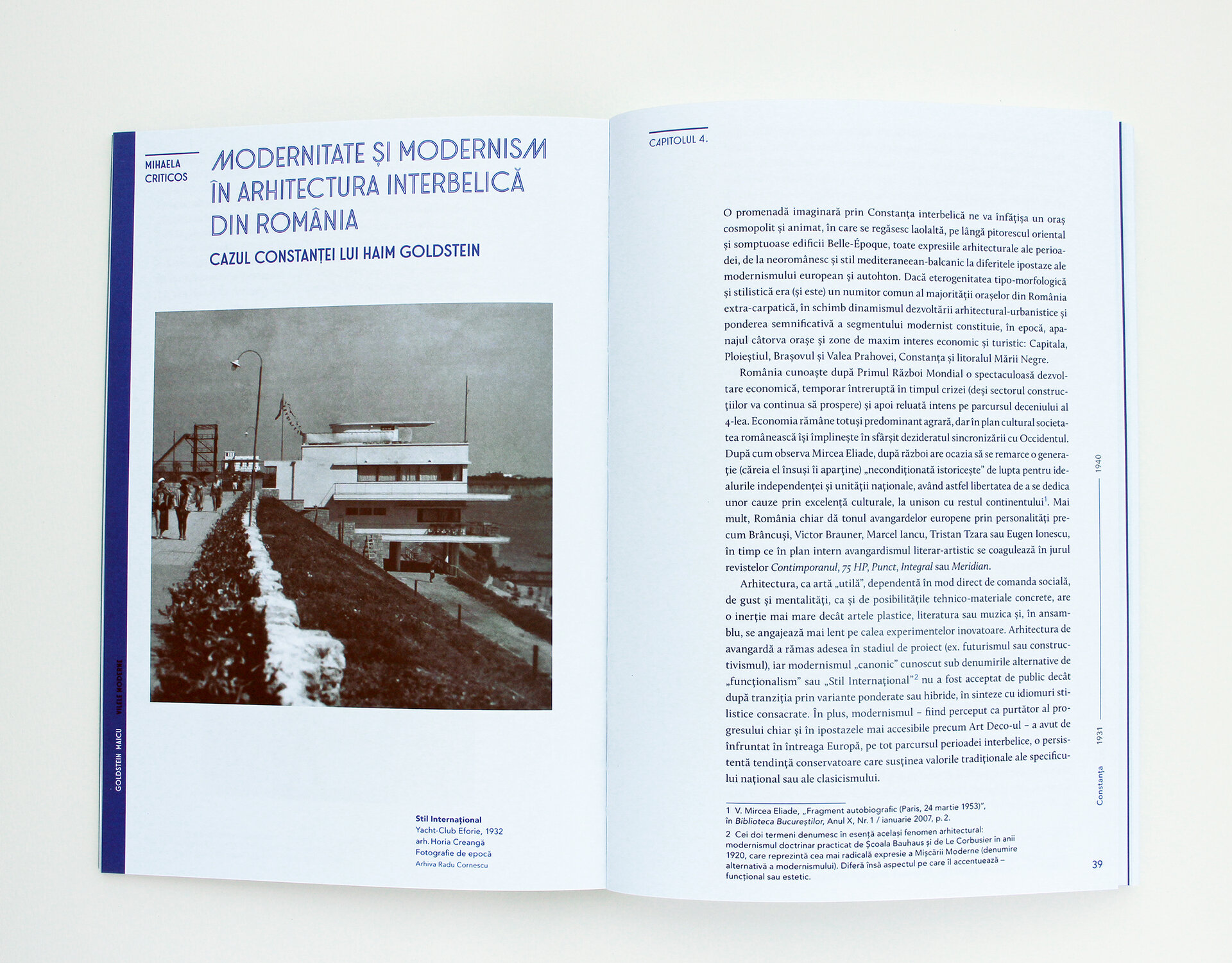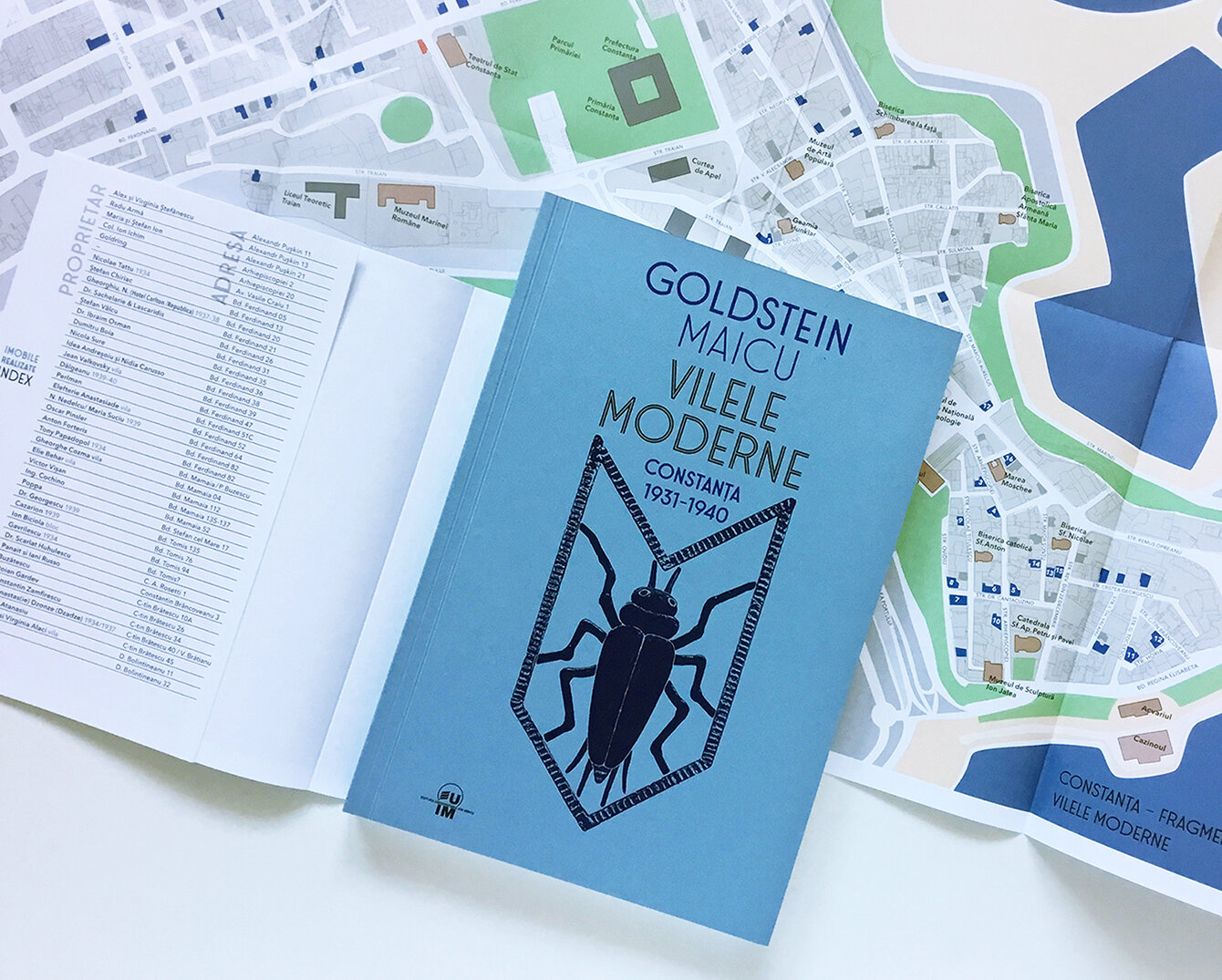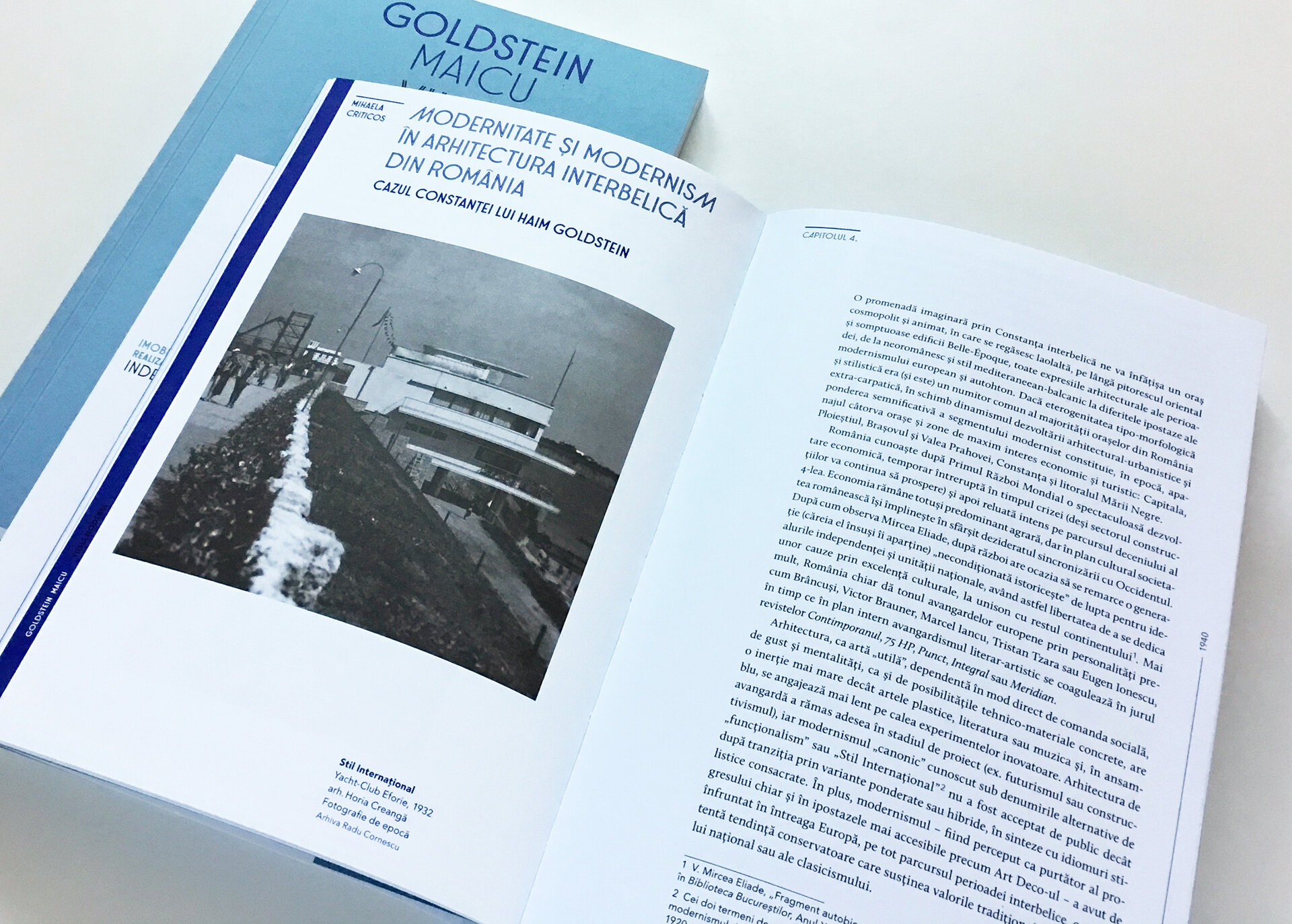
- Nomination for the “Research through Architecture / Architecture Books” section
Goldstein Maicu. Modern Villas.Constanța. 1931–1940
Authors’ Comment
The book "Goldstein Maicu. Modern Villas. Constanța. 1931–1940" is authored by architects Andreea Cel Mare, Mihaela Criticos, Radu Cornescu, and historian Ciprian Plăiașu. It is an editorial project of the Bucharest branch of the Romanian Order of Architects (OARB), funded through the architecture stamp, and coordinated by architect Dorothee Hasnaș.
The volume represents the result of collaboration between authors from various fields - architecture, history, and journalism - each with their unique perspective shaped by their professional background. Together, they have created a guide to Constanța for the general public, highlighting a prosperous period in the city's history that is relatively unknown today.
The book brings to the attention of specialists and, more importantly, the general public, a decade in the architectural history of Constanța marked by the highly prolific work of a young Jewish architect, who later became a significant figure in the professional and academic community. At the same time, the authors raise concerns about the advanced deterioration and mutilation of the buildings that have survived until today.
Returning from his studies in Italy at the School of Civil Engineering in Rome in 1931, young Haim (Harry) Goldstein, who was double-licensed in architecture and engineering, was involved in the construction of over 100 buildings in less than 10 years. His career was suspended in 1941 due to his Jewish origin, and he moved to Bucharest, where he continued his professional life under a new name, overseeing design teams for prominent projects like Casa Scânteii, Sala Palatului, and the National Theater. Under the name Horia Maicu, he became the chief architect of the capital and a professor at the Ion Mincu Institute of Architecture (now UAUIM).
The book delves into the socio-economic landscape of the city at that time and studies the clientele behind these buildings. What remains of Constanța's modernism today? What has survived the harsh contemporary interventions? How does the architecture of these buildings fit into today's city? What are the necessary measures for their consolidation?
The book tells the story of Constanța at that time, provides details about more than 60 buildings and the archive with hundreds of sketches that led to the construction of these villas, along with over 300 historical and contemporary photographs. It offers a proposed tour of the peninsula and serves as a guide for best practices in the maintenance and renovation of modernist buildings. It also includes an index of the villas.
The book addresses questions naturally arising with the discovery of the Haim Goldstein drawings archive - found in a dumpster on Batiștei Street in 2014- and serves as a guide for a day trip to Constanța: on a train ride, you can read the first part, which provides context, then take a self-guided tour. The book's cover includes a map of the peninsula and highlights the main Goldstein buildings. On your return trip, you can read in more detail about the houses and their specifics.
The book was launched on March 23, 2023 at the Bucharest Territorial Branch of the Romanian Order of Architects. After hitting the bookstores, the initial print run of 700 copies was sold out rapidly, and the public has been calling for an urgent reprint, with the book's price reaching speculative levels on online platforms. The reprint of the book "Goldstein Maicu. Modern Villas. Constanța. 1931–1940" is a natural step. With the book's release, several property owners in Constanța have been able to find sketches or vintage photographs of their buildings, increasing their appreciation and leading to more faithful renovations.
- The Rehabilitation of Built Heritage. Theory and Technique
- Goldstein Maicu. Modern Villas.Constanța. 1931–1940
- The mediterranean architecture in romanian interwar period
- The Academic Community of the Architecture University
- Digital modeling of the impact of the 1755 Lisbon Earthquake / Second revised edition
- The Impalpable in Architecture. The Oikological Vocation and the Cosmotopic Character of the Architectural Interior
- The Dynamics of the Christian Lithurgical Space. The Influence of Function - 2nd edition revised, completed and actualized
- The Arad citadel. Architectural valences of the relationship between history and city
- Set Apart. Evangelical Worship Space
- Proportions in Architecture. Perceptions and spatial identity.
